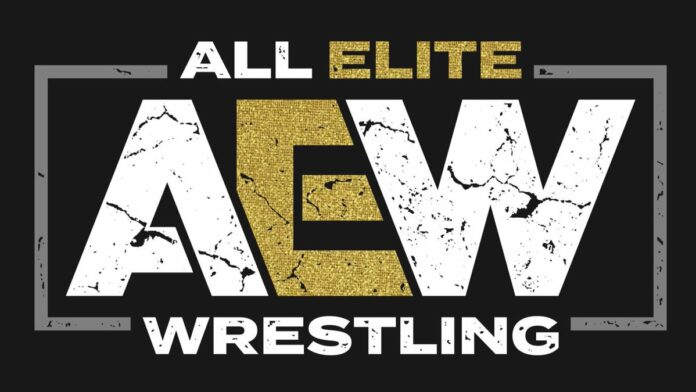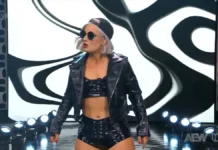
Just a few weeks ago, it was announced that TNT, the network that distributed Nitro during the Monday nights wars, renewed the All Elite Wrestling Dynamite show through 2023 with a fifth year option. Debuting in October, the Wednesday night broadcast has usually garnered just below a million viewers a week, despite head-to-head competition with NXT on USA. According to the Wrestling Observer’s Dave Meltzer, the deal will pay AEW $175 million total for the TV rights fee, which translates to roughly $45 million a year. There’s also speculation that a second All Elite show will be added to the schedule as a part of the new contract. All things considered, this move from TNT solidifies AEW’s place among the professional wrestling industry and the project is definitely more than just an upstart group now.
The most important aspect of this deal, and really any business venture for that matter, is that it allows All Elite Wrestling to be a profitable promotion. As I’ve said many times before, success for the company isn’t necessarily defeating the WWE in the ratings, but rather the ability to become a profitable organization. Revenue and profitability are what ultimately determine success.
However, this TV extension is really only a small victory as far as the overall aspirations of the Khan-owned wrestling league. The new TV contract gives them the opportunity and the funding to build their audience while making a profit, which still has a lot of work to be done. Obviously, TNT thinks the Dynamite show has potential to grow and the network was able to make money from the ad revenue associated with it. Make no mistake about it, the cable channel wouldn’t have offered the extension if the economics of the Dynamite production didn’t make money for them. Another aspect that I’ve written about before is that as far as television goes, consistent ratings are one of the most valuable commodities because it fuels commercial revenue, which is what AEW delivered with relatively consistent numbers despite the NXT competition. Regardless of the slip in Raw ratings during the past few years, one of the main reasons the WWE received such a major TV deal last year was that there’s still consistent viewership.
Considering that this contract solidifies AEW’s position within the industry, they will have the increased pressure of not only to continue to deliver the ratings, but also to build upon it. This is where fixing the flaws in the production and presentation of the show are extremely important, as the progress of the organization can’t plateau or it could typecast All Elite in a specific role within the industry. For example, for the majority of its run on Spike TV, TNA Impact garnered a million viewers and that was their ceiling. Before the group became known for its cringe worthy Vince Russo angles or where Hulk Hogan worked Dixie Carter as a money mark to rebound from his financial debacles, the league was more or less known as the company where you would find some innovate wrestling and the place where almost any former WWE star could get work after they were released. The innovate X-Division and a revolving door of former WWE stars combination garnered the previously mentioned million viewers a week on Spike. When the number remained stagnant after the hefty contracts of Hogan, Ric Flair, Rob Van Dam, Jeff Hardy, and others, it led to the financial woes that led the company to the brink of collapse before Anthem Sports eventually rescued it with the purchase of the promotion to maintain programming for its TV networks.
Don’t get me wrong, the mistakes that were made with the presentation or structure of the product aren’t critical flaws, as it’s understood that All Elite Wrestling is a work in progress to continue to establish itself as a legitimate player in the industry. That being said, it’s definitely important to correct and improve on certain aspects of the organization. Along with the task to build the audience, both in live attendance and ratings, the company must continue to build its roster. Most importantly, the roster must be made stars that can draw money and sell pay-per-views. Furthermore, with the addition of a second TV show, the rest of the roster should be featured more regularly to establish them as more than just another competitor that randomly gets booked for an occasional dynamite appearance. There are still several members of the roster that aren’t usually booked for TNT, and AEW Dark on Youtube isn’t a substitute for national TV exposure. When was the last time that Shawn Spears, Jimmy Havoc, or Emi Sakura were booked on TNT?
Another aspect that should be considered as the programming continues is the pace of the shows and the feuds that build toward the pay-per-views. As much as the stellar high spot matches got the AEW product noticed, not every match has to be a 20-minute display of every move in the book. Those type of matches draw well on the independent scene because most of those groups don’t run weekly events. When AEW has similar matches every week, the format of the show becomes somewhat repetitive and it’s not nearly as effective because the matches don’t stand out as much as they did prior to that.
I’d still say that the Cody/Chris Jericho pay-per-view match was rushed and because of the stipulation of Cody not challenging for the belt again, it limits the possibility for a rematch, at least on PPV if the belt isn’t on the line. Despite solid progress on a weekly basis, the Jericho/Jon Moxley match scheduled for later this month might also be rushed because after the Moxley match, who could realistically challenge Jericho for the belt on pay-per-view? This is where the WWE Network is such a factor for wrestling content across the board in the industry because regardless of the card, a $50 event is a tough sell when the streaming service has not only the PPV, but also thousands of hours of on demand content for $10 a month.
All that being said, this contract gives AEW a legitimate chance to finally provide some major competition within the industry. It’s important to remember that during the duration of this deal that All Elite will have a time frame where they can capitalize on the increased exposure and the opportunities of the potential addition of other stars. Perhaps when specific contracts expire, stars like the Revival or other underutilized talented stars make the jump and continue the hype around the AEW product. It’s important that AEW make the most of the time frame that they will have during this contract to make progress to allow for the company to become more well known among the casual fans. As much as any comparison to the Dixie Carter era seems like a negative, TNA had a roughly two-year period from 2006-2008 when they could’ve really make an impression to establish themselves as legitimate competition to WWE, but they fumbled it. At some point during this TNT deal, All Elite will have a similar chance and while it remains to be seen, I would be cautiously optimistic about their ability to become a known entity among the general audience. Any “fans” that somehow hope for the decline of AEW are extremely misguided because the success of AEW would be beneficial to the entire industry.
What do you think? Comment below with your thoughts, opinions, feedback and anything else that was raised.
Until next week
-Jim LaMotta
E mail [email protected] | You can follow me on Twitter @jimlamotta







